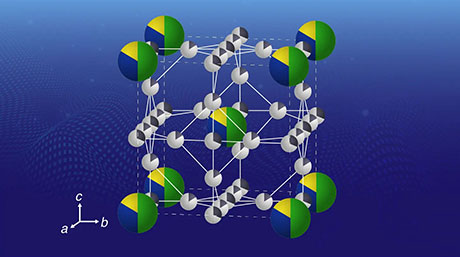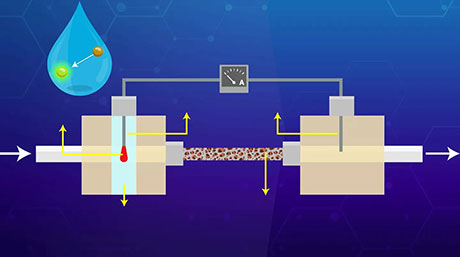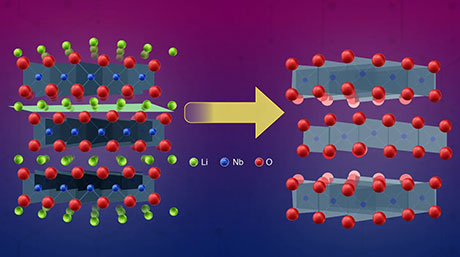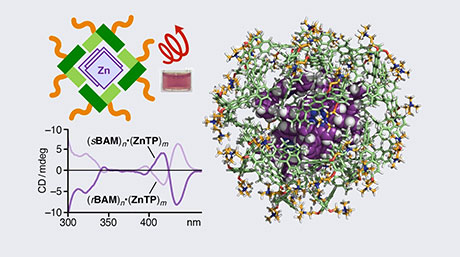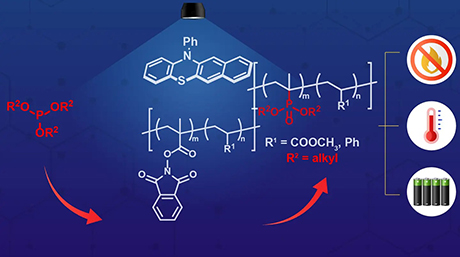Chemical Science and Engineering News
A Deep Dive into Polyimides for High-Frequency Wireless Telecommunications
Measurements of polyimides' dielectric properties could accelerate the development of 6G technologies.
Detailed measurements and analysis of the dielectric properties of polyimides could bolster the development of 6G wireless communication technologies, report scientists from Tokyo Tech and EM Labs, Inc. Using a device known as a Fabry—Pérot resonator, they measured the dielectric constants and dissipation factors of various types of polyimides at frequencies up to 330 GHz. Their findings provide design pointers for polymer-based insulating materials suitable for applications in high-frequency telecommunications.
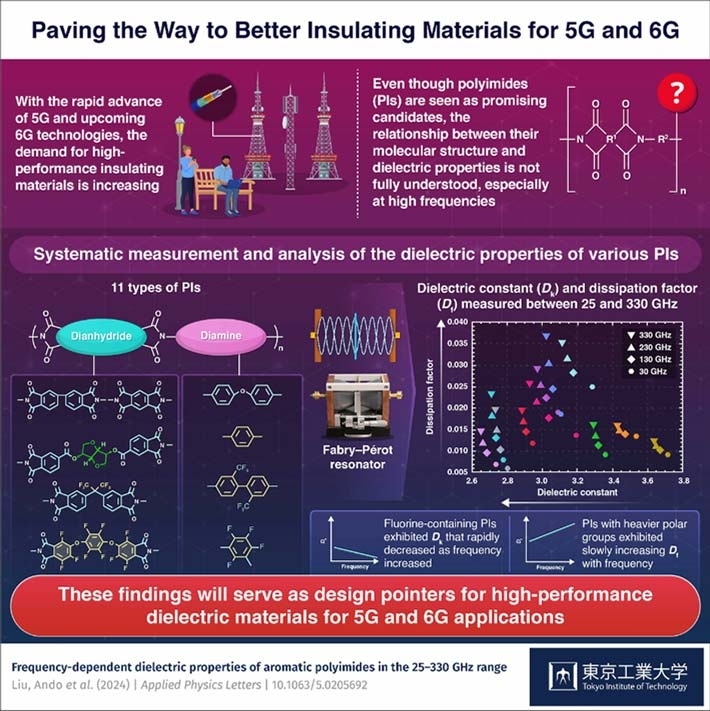
As 5G technologies continue to evolve, scientists and engineers are already exploring new ways to turn things up a notch for 6G. One of the biggest challenges to address in both 5G and 6G is the many detrimental effects that operating at extremely high frequencies has on wireless communications. At frequencies nearing the terahertz range, problems such as signal attenuation and interference are more prominent, and maintaining signal integrity becomes much harder.
Some of these issues can be greatly mitigated by using insulating materials with exceptional dielectric properties. Glass- and ceramic-based insulating materials currently dominate the scene, but their high cost and fabrication complexity render them largely unsuitable for mass-produced devices, which are needed for high-end 6G. Could polymeric materials be a better alternative?
In an effort to answer this question, a research team from Tokyo Institute of Technology conducted a study on polyimides (PIs), which are gaining traction as materials suitable for high-frequency operation. Led by Professor Shinji Ando and including Haonan Liu, the team's latest paper was published in Applied Physics Letters![]() on June 6th, 2024.
on June 6th, 2024.
"Polyimides stand out because of their excellent thermal stability, mechanical toughness, flexibility, lightweight, and favorable dielectric properties. However, the correlation between the molecular structure of PIs and their dielectric properties has not yet been fully established," explains Ando. "Existing studies on the dielectric properties of PIs in the GHz frequency range are limited to below 60 GHz, which poses a severe hindrance to the design of pointers for next-generation dielectric PI materials."
The research team sought to address this knowledge gap by measuring and analyzing the dielectric properties of 11 PIs with different types of molecular structures. To this end, they used a device called a Fabry—Pérot resonator, which is currently the only known tool suitable for measuring the dielectric properties of thin films in the 110—330 GHz range with a low dissipation factor.
Using the resonator, the researchers measured the dielectric constant (Dk) and the dissipation factor (Df) of the polyimides. To clarify, both Dk and Df are representative of a material’s ability to store energy in different ways, and low values are critical for minimizing signal loss and maintaining signal integrity at high frequencies.
All of the 11 PIs showed rather typical Dk and Df curves, exhibiting a continuous decrease in these values as frequency increased. Notably, the PIs that contained higher fluorine content exhibited lower Dk values. In particular, a perfluorinated polyimide exhibited a significantly lower Dk and smaller Df than the other polyimides, and the frequency dependence of Dk and Df is also very small. Another particularly interesting discovery was that the increase in Df was negatively correlated with the polar fraction—that is, the percentage of the polymer's mass made up of polar functional groups.
Taken together, the results of this study shed some much-needed light on the dielectric qualities of PIs. This data could eventually pave the way to faster and more reliable telecommunications by enabling engineers to tap into the terahertz range while overcoming the associated challenges. Of course, more efforts will be needed to identify the best type of PIs for these purposes. "Spectroscopic studies in the THz range will help us indirectly infer the origins of the dielectric responses of different structural PIs at high frequencies, remarks Ando. "Our findings will hopefully be beneficial for developing high-performance polymer-based insulating materials for 6G technologies," concludes Ando, with eyes on the future.
- Reference
| Authors : | Haonan Liu1, Ririka Sawada1, Shana Yanagimoto2, Yoshiyuki Yanagimoto2, and Shinji Ando1* |
|---|---|
| Title : | Frequency-dependent dielectric properties of aromatic polyimides in the 25—330 GHz range |
| Journal : | Applied Physics Letters |
| DOI : | 10.1063/5.0205692 |
| Affiliations : | 1Department of Chemical Science and Engineering, Tokyo Institute of Technology, Japan 2EM Labs Inc., Japan |
|
* Corresponding author's email: ando.s.aa@m.titech.ac.jp |
|
- Shinji Ando | Researcher Finder - Tokyo Tech STAR Search
- Haonan Liu | Researcher Finder - Tokyo Tech STAR Search
- Ando & Liu Laboratory
- Haonan LIU's Personal Page
- Chemical Science and Engineering Graduate Major|Education|Department of Chemical Science and Engineering, School of Materials and Chemical Technology
- Chemical Science and Engineering Undergraduate Major|Education|Department of Chemical Science and Engineering, School of Materials and Chemical Technology
- EM labs
- Latest Research News
School of Materials and Chemical Technology
—Encompassing the Disciplines of Science—
Information on School of Materials and Chemical Technology inaugurated in April 2016
Further Information
Professor Shinji Ando
School of Materials and Chemical Technology,
Tokyo Institute of Technology
Email ando.s.aa@m.titech.ac.jp

